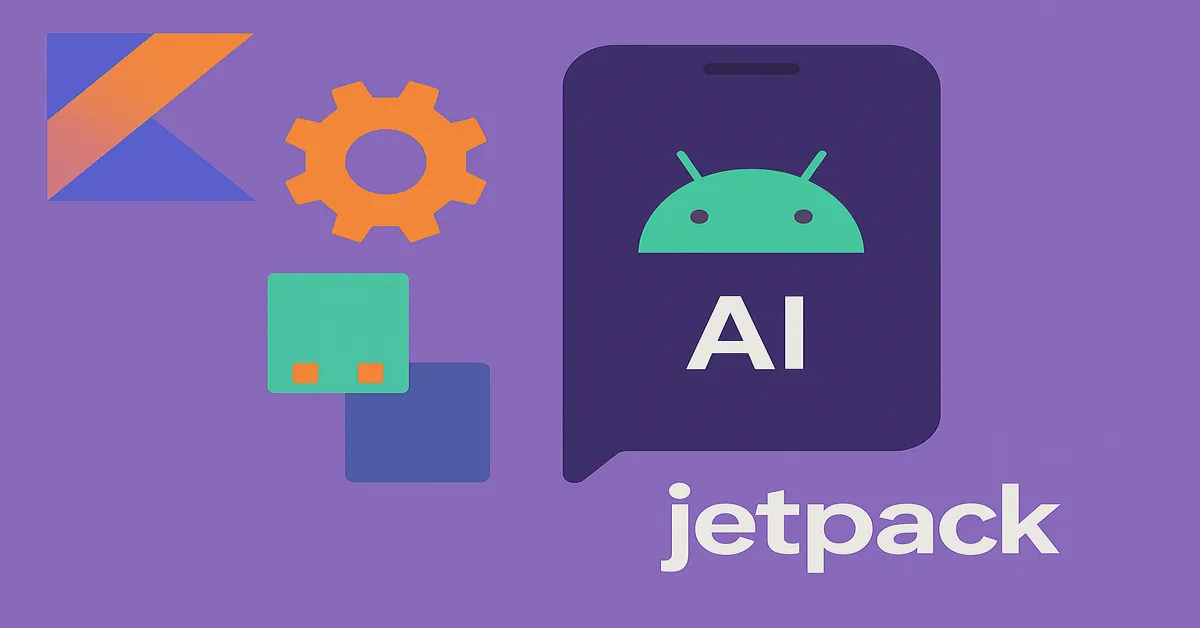How today’s Android developers build faster, cleaner, and future-proof apps using modular principles and Jetpack tooling.
In a software world that now expects apps to be faster, more secure, and instantly scalable, Android development has undergone a quiet but monumental transformation. No longer a chaotic mix of activities and monoliths, the modern Android codebase is now engineered with precision, structured with clean boundaries, and optimized for team scalability. The engine behind this evolution? A potent combination of Jetpack libraries, Kotlin’s expressiveness, and the architectural discipline of modularization.
This isn’t a shift born in theory—it’s the result of large teams needing to ship complex apps on demanding timelines. And it has reshaped how Android is built in 2025.
This article is an in-depth exploration of the current best practices for Android app architecture, showing how Jetpack components, Kotlin features, and modularization principles converge to create clean, maintainable, and scalable Android codebases.
The Rise of Modern Android Architecture
Android development didn’t always have a consensus. For years, developers improvised solutions around Activities and Fragments. State was passed awkwardly, lifecycle bugs abounded, and testing was an afterthought.
Then came Jetpack—a suite of opinionated libraries created by Google that offered a structured, testable, and modern foundation for building apps.
Now, paired with Kotlin and modular design, Jetpack’s ecosystem has enabled a generation of developers to move beyond boilerplate and build apps that are robust, reactive, and ready for scale.
What Defines a Modern Android Architecture?
A modern Android app architecture typically embodies the following principles:
- Separation of concerns: UI, business logic, and data management live in isolated layers.
- Reactive data flow: Using
StateFlow,LiveData, orComposestate management. - Testability: Each component can be unit or integration tested in isolation.
- Scalability: Modular code allows teams to build features in parallel.
- UI as a function of state: Achieved through Jetpack Compose or reactive view models.
- Inversion of control: Dependencies are injected, not hardcoded.
Architectural Layers (Clean but Lean)
Most modern Android apps follow a simplified clean architecture layered like so:
pgsqlCopyEdit[ UI Layer ] → Jetpack Compose or XML + ViewModel
↓
[ Domain Layer ] → UseCases + Business Logic
↓
[ Data Layer ] → Repositories, APIs, Local Storage
Each layer depends only on the one below, and knows nothing about implementation details in lower layers.
🔹 Kotlin: The Backbone of Modern Android
Kotlin isn’t just a language choice—it’s the enabler of architecture. Its features reduce boilerplate and make modular code clean and concise.
Key Kotlin features that shape architecture:
- Sealed classes: Great for representing UI state and one-off events.
- Coroutines and Flows: Enable structured, asynchronous programming.
- Data classes: Perfect for modeling business entities and UI state.
- Higher-order functions: Promote composability and reuse.
🔹 Jetpack Libraries: Android’s Modern Toolkit
Jetpack is not a monolith. It’s a modular set of libraries that each solve specific problems. The most relevant ones for modern architecture:
| Library | Purpose |
|---|---|
| Jetpack Compose | Modern UI toolkit, replaces XML views |
| Navigation | Safe, structured navigation between screens |
| Lifecycle | Manages UI components’ lifecycle state |
| ViewModel | Holds UI data in a lifecycle-aware way |
| Room | Local database access with abstraction |
| DataStore | Modern key-value storage |
| Hilt | Dependency injection |
| WorkManager | Scheduled background tasks |
These libraries are opinionated—but in a helpful way. They steer developers toward consistency and testability without enforcing rigid patterns.
🔹 Modularization: Scaling Beyond Monoliths
As apps grow, the cost of compiling and testing a monolithic codebase increases exponentially. Modularization answers this by breaking the app into feature-specific modules, each with its own responsibilities and dependencies.
Types of Modules
- App module: The actual entry point that ties everything together.
- Core module: Contains common utilities, themes, base classes.
- Feature modules: Independent units like
login,profile,settings. - Domain module: Shared business logic and use cases.
- Data module: Repository implementations, APIs, data sources.
Benefits
- Faster builds due to isolated compilation.
- Parallel development across teams.
- Reusability of features across projects.
- Better encapsulation of responsibilities.
Practical Example: A Feature-Based Modular App
Let’s look at a simple app with the following features:
- Login
- Dashboard
- Profile
App Structure
rubyCopyEdit:app
:core-ui
:core-network
:feature-login
:feature-dashboard
:feature-profile
:domain
:data
Feature Module: feature-login
- Depends on
:domainand:core-ui - Contains UI, ViewModel, navigation logic
- No access to unrelated modules (e.g.,
feature-dashboard)
kotlinCopyEdit@Composable
fun LoginScreen(viewModel: LoginViewModel = hiltViewModel()) {
val uiState by viewModel.uiState.collectAsState()
// Render UI based on uiState
}
ViewModel Example
kotlinCopyEdit@HiltViewModel
class LoginViewModel @Inject constructor(
private val loginUseCase: LoginUseCase
) : ViewModel() {
private val _uiState = MutableStateFlow(LoginUiState())
val uiState: StateFlow<LoginUiState> = _uiState
fun onLoginClicked(email: String, password: String) {
viewModelScope.launch {
val result = loginUseCase(email, password)
_uiState.value = result.toUiState()
}
}
}
UseCase (in :domain)
kotlinCopyEditclass LoginUseCase(private val authRepository: AuthRepository) {
suspend operator fun invoke(email: String, password: String): LoginResult {
return authRepository.login(email, password)
}
}
Repository (in :data)
kotlinCopyEditclass AuthRepositoryImpl(private val api: AuthApi) : AuthRepository {
override suspend fun login(email: String, password: String): LoginResult {
return api.authenticate(email, password)
}
}
This separation ensures that each layer is swappable, testable, and isolated from changes in others.
Jetpack Compose: UI the Modern Way
Jetpack Compose is more than a new UI framework—it’s a declarative state management system.
Advantages:
- Less boilerplate than XML + ViewBinding
- UI = function(state) = easy testability
- Built-in animations, theming, and previews
Compose works seamlessly with modularization: each feature module can expose its own @Composable screens without entangling dependencies.
State Management: ViewModel + StateFlow
Gone are the days of mutating variables in onResume(). Today, the UI reacts to state.
kotlinCopyEditdata class UiState(val loading: Boolean = false, val error: String? = null)
val uiState = MutableStateFlow(UiState())
fun load() {
viewModelScope.launch {
uiState.value = UiState(loading = true)
try {
val data = repository.getData()
uiState.value = UiState()
} catch (e: Exception) {
uiState.value = UiState(error = e.message)
}
}
}
In Compose, this state flows naturally into the UI:
kotlinCopyEditval state by viewModel.uiState.collectAsState()
if (state.loading) {
CircularProgressIndicator()
} else if (state.error != null) {
Text("Error: ${state.error}")
}
Dependency Injection with Hilt
Hilt makes dependency injection seamless in modular apps.
Setup
@HiltAndroidAppon yourApplicationclass@Module+@Providesor@Bindsin each module
kotlinCopyEdit@Module
@InstallIn(SingletonComponent::class)
abstract class AuthModule {
@Binds
abstract fun bindAuthRepo(impl: AuthRepositoryImpl): AuthRepository
}
Now every @Inject constructor() automatically gets its dependencies resolved.
Testing Modern Android Architecture
Modern architecture makes testing straightforward.
Unit Test ViewModel
kotlinCopyEdit@Test
fun loginSuccess_updatesUiState() = runTest {
val fakeRepo = FakeAuthRepo(success = true)
val viewModel = LoginViewModel(LoginUseCase(fakeRepo))
viewModel.onLoginClicked("test@example.com", "password")
assertEquals(false, viewModel.uiState.value.loading)
assertNull(viewModel.uiState.value.error)
}
Integration Test Feature Module
Use HiltAndroidRule to inject real modules, and test flows across layers.
Common Pitfalls to Avoid
- Over-modularization: Don’t split for the sake of splitting. Focus on real boundaries.
- Misplaced dependencies: Keep
:appdepending on features—not the other way around. - State leaks: Manage lifecycle carefully, especially with shared
StateFlowor navigation.
What’s Next: Composable Architecture
The future of Android architecture is increasingly composable and declarative:
- Compose Navigation: Replaces XML and NavGraph for screen transitions.
- Unidirectional Data Flow (UDF): State → UI → Events → UseCases
- Multiplatform shared UIs: Using Compose Multiplatform (Android, Desktop, Web)
Conclusion
In 2025, the question isn’t whether to use Jetpack or Kotlin—it’s how best to use them together. When combined with modularization, these tools offer Android teams a clean, resilient architectural foundation that scales from MVPs to millions of users.
The modern Android app is no longer a tangle of Fragments and lifecycle bugs. It’s a system—built with clear responsibilities, defined layers, and components that communicate through contracts, not assumptions.
Jetpack provides the scaffolding. Kotlin provides the elegance. Modularization provides the discipline. Together, they form the architecture for what Android development has become—and where it’s heading next.
Read:
Lean Architecture in Kotlin: From Theory to Code
Kotlin Native: Building a CLI Tool Without JVM
Kotlin and AI: Building an AI Chatbot Using Kotlin + OpenAI API
Kotlin Wasm (WebAssembly): Writing Web Apps in Kotlin Without JS
FAQs
1. Why should I use modularization in an Android app?
Modularization helps split your codebase into independent, reusable components, improving build speed, code organization, and team scalability. It also enables parallel development, cleaner feature boundaries, and easier testing and maintenance as your app grows in complexity.
2. How does Jetpack Compose fit into modern architecture?
Jetpack Compose is Android’s modern, declarative UI toolkit that integrates seamlessly with architectural layers like ViewModel and StateFlow. It promotes UI as a function of state, reducing boilerplate, improving readability, and enabling better separation of concerns within a reactive architecture.
3. What are the key layers in a modern Android app architecture?
A modern architecture typically includes:
- UI Layer (Jetpack Compose/Activity/Fragment + ViewModel)
- Domain Layer (UseCases + business logic)
- Data Layer (Repositories + APIs, databases, and data sources)
Each layer communicates with the one directly below and only depends on abstractions, not implementations.
4. Can I apply this architecture in small or solo projects?
Yes. While modularization is especially useful for large teams, the principles of clean separation, state-driven UI, and testability benefit small projects too. Start with 2–3 modules (like :core, :feature, :data) and expand only as needed to keep things simple and maintainable.
5. What tools and libraries are essential for implementing modern Android architecture?
Key tools include:
- Jetpack Compose for UI
- ViewModel + StateFlow for state management
- Hilt for dependency injection
- Room or DataStore for local persistence
- Navigation Component for structured screen transitions
- Kotlin features (coroutines, sealed classes, DSLs) for expressiveness and clarity
Together, they enable a robust, scalable architecture aligned with current Android best practices.











